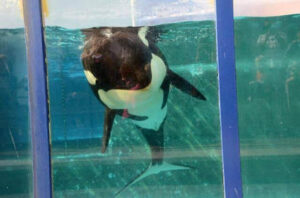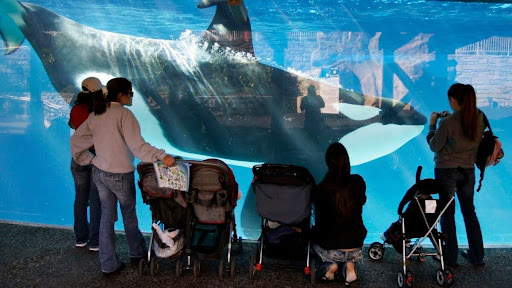SeaWorld, a once-celebrated marine park, is at the center of a growing controversy and public scrutiny. The debate surrounding the park’s continued operation revolves around many concerns, from ethical considerations to environmental impact. Founded to entertain and educate visitors about marine life, SeaWorld has faced criticism for its treatment of animals, particularly orcas, dolphins, and other aquatic species.
Over the years, the park has been accused of exploiting marine life for profit, raising ethical questions about the morality of keeping intelligent and social creatures in captivity. Beyond ethical concerns, environmentalists argue that the park’s existence disrupts natural ecosystems and contributes to the degradation of marine environments.
This article will explore the multifaceted dimensions, including why SeaWorld should be shut down. We will look into the ethical, environmental, and economic aspects that fuel the arguments against the continuation of this iconic marine park.
Ethical Concerns: Exploitation of Marine Life

SeaWorld has long been mired in ethical controversy, with one of the primary concerns centering around the alleged exploitation of marine life for entertainment. Critics argue that the park showcasing marine animals, particularly orcas and dolphins, in captivity raises serious ethical inquiries about the cure of sentient beings.
The confinement of these intelligent and social creatures in relatively small enclosures, often in contrast to the vastness of their natural habitats, has sparked widespread condemnation. Detractors contend that such captivity deprives marine animals of the freedom essential for their well-being. The use of orcas, known for their complex social structures and extensive migration patterns, as performers in orchestrated shows is viewed by many as a blatant form of exploitation.
Furthermore, concerns about the training methods employed at SeaWorld have been raised, with allegations of using food deprivation and other coercive techniques to make marine animals perform tricks to entertain visitors. Critics argue that such practices compromise the animals’ welfare and send a troubling message about the acceptable treatment of sentient beings for commercial gain.
Environmental Impact: Disruption of Ecosystems
SeaWorld’s operations extend beyond the confines of its tanks, with critics pointing to the broader environmental impact on marine ecosystems. The capture and maintenance of marine animals in captivity contribute to the disruption of these delicate ecosystems, sparking concerns among environmentalists.
Removing marine life from their natural habitats for display in captivity can have ripple effects on local ecosystems. It disrupts the balance within these environments, impacting the populations of various species and potentially leading to cascading ecological consequences. In particular, capturing orcas and dolphins, which are apex predators in their natural habitats, can result in imbalances that affect the entire marine food web.
Moreover, the artificial environments created by SeaWorld for its marine exhibits may not adequately replicate the natural conditions that marine animals require for their physical and psychological well-being. Critics argue that confined spaces and controlled settings fail to provide the mental and physical stimulation that these creatures would experience in the wild, potentially leading to stress, aggression, and other behavioral issues.
Animal Welfare Issues: Confinement and Stress
A central component of the criticism directed at SeaWorld revolves around the perceived inadequate conditions in which marine animals, particularly orcas and dolphins, are kept. The confinement of these creatures in relatively small tanks has raised significant animal welfare concerns, prompting debates about the ethical treatment of sentient beings in captivity.
Orcas, in particular, are known for their wide-ranging movements in the wild, covering vast distances in their natural habitats. The limited space provided in captivity is considered by many as insufficient for these animals, potentially leading to stress, boredom, and physical health issues. Critics argue that the unnatural conditions in which marine animals are kept at SeaWorld compromise their well-being and quality of life.
Concerns about the social dynamics among marine animals in captivity have also been raised. Orcas, for example, are highly social and form intricate family structures. Separating individuals from their natural social groups can result in social stress and disrupt their natural behavioral patterns. Critics argue that the emphasis on training for entertainment purposes further contributes to the stress and potential harm experienced by marine animals in captivity.
Public Safety Concerns: Incidents and Accidents
Beyond ethical and environmental criticisms, SeaWorld has faced scrutiny over public safety concerns arising from incidents and accidents involving both visitors and trainers. The interaction between humans and marine animals, especially in live shows, introduces a level of risk that has triggered debates about the safety protocols at the park.
Notable incidents, including attacks on trainers by orcas, have raised questions regarding the sufficiency of safety measures and the appropriateness of close human-animal interactions. Critics argue that the inherently unpredictable nature of wild animals, even in captivity, poses a risk to the safety of park employees and visitors.
The tragic demise of a SeaWorld trainer in 2010 during a live performance involving an orca named Tilikum garnered widespread attention and intensified concerns about the safety of such performances. The happening sparked controversies concerning the ethics of keeping large and powerful marine animals close to humans for entertainment.
Ineffective Conservation Efforts: Lack of Positive Impact
One of the justifications often put forth by marine parks like SeaWorld is their purported contribution to conservation efforts. However, critics argue that SeaWorld’s initiatives fall short of making a meaningful positive impact on the conservation of marine species, particularly when compared to the negative consequences of captivity.
While the park has engaged in breeding programs and publicized its efforts to study and understand marine life, skeptics contend that the benefits do not outweigh the costs. They argue that the captivity of marine animals for entertainment purposes fails to address the root causes of threats to these species in the wild, like habitat destruction, pollution, and climate oscillation.
Changing Public Attitudes: Shift Towards Ethical Tourism
Changing attitudes toward ethical tourism and animal welfare significantly impact the discourse on SeaWorld’s viability. As awareness of captive animal treatment grows, visitors increasingly question supporting marine parks with live animal performances. Modern travelers prioritize experiences aligned with ethical practices, shunning venues like SeaWorld where marine animals may suffer stress and compromised well-being. Enjoying entertainment at the expense of captive animals is losing acceptability. Social media and documentaries are pivotal in spreading information about confined marine animal conditions and reshaping public perception. This heightened awareness prompts travel agencies to exclude visits to such parks from itineraries, reflecting a broader shift toward responsible tourism.
Economic Viability: The Decline of SeaWorld’s Profitability
The economic viability of SeaWorld has come under increasing scrutiny, reflecting the culmination of ethical concerns, environmental criticisms, and shifting public attitudes. The park has faced financial challenges as attendance numbers dwindle and controversies surrounding its practices persist.
In recent years, SeaWorld has experienced a revenue decline, partly attributed to the negative publicity and the growing wave of public disapproval. The economic impact of this decline is evident in reduced profits, stock devaluation, and the need for cost-cutting measures by the park’s management.
Moreover, legal battles and regulatory challenges stemming from animal welfare concerns have added to SeaWorld’s financial woes. Settlements and fines resulting from these issues contribute to the strain on the park’s resources.
The economic argument against SeaWorld revolves around the idea that the model of using captive marine animals for entertainment may no longer be sustainable in a climate where consumers are increasingly conscientious about their choices’ ethical and environmental implications.
Conclusion:
In conclusion, SeaWorld is at a critical juncture, facing mounting criticisms and economic challenges. The ethical concerns surrounding the exploitation of marine life and environmental and safety issues have fueled a shift in public attitudes, vividly responding to queries like why SeaWorld should be shut down. As society leans towards more ethical tourism options and demands greater accountability, SeaWorld’s profitability has suffered, raising robust questions. The changing circumstances signal a need for reflection and adaptation within the marine entertainment industry. Whether SeaWorld can reconcile its practices with evolving societal values or succumb to the tide of change remains to be determined, leaving the future of this iconic marine park in question.




